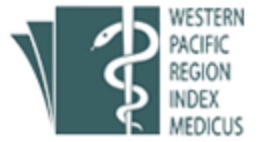Prevalence and Perinatal Outcomes of Group B Streptococcus Positive Mothers in a University Hospital in Pahang, Malaysia
DOI:
https://doi.org/10.31436/imjm.v24i01.2343Keywords:
Group B Streptococcus, Prevalence, Screening, Intrapartum antibiotic prophylaxis, Perinatal outcomesAbstract
INTRODUCTION: Group B streptococcus (GBS) is a leading cause of early neonatal infection and is related to various maternal infections. This study aims to determine the prevalence of GBS-positive mothers and their pregnancy outcomes in a University Hospital in Pahang, Malaysia. MATERIALS AND METHODS: A comparative cross-sectional study was conducted from October 2021-May 2022, involving 230 pregnant women between 35-38 weeks follow-up at this hospital. Rectovaginal swab (RVS), high vaginal swab (HVS), and midstream urine (MSU) cultures were sent for GBS screening in asymptomatic mother, and positive mothers received intrapartum antibiotic prophylaxis (IAP) as per protocol. Maternal outcome analysed were preterm pre-labour rupture of membrane (PPROM), preterm labour, maternal pyrexia, and puerperal infection. Whereas, neonatal outcomes include prematurity, low Apgar score, requirements of NICU/SCN admission and antibiotic; and diagnosis of neonatal early-onset GBS (EOGBS) disease. RESULTS: 58.6% of participants were tested GBS-positive based on either RVS, HVS, or MSU culture. There was no significant association between maternal GBS status, sociodemographic, and clinical background except for being overweight (mean BMI 26.3 kg/m2, p= 0.047). Maternal and neonatal outcomes were not significantly different between GBS-positive and GBS-negative mothers. CONCLUSION: The prevalence of GBS colonisation (58.6%) was higher compared to reports worldwide. However, the implementation of GBS screening and IAP had successfully prevented the development of EOGBS disease and complication for both mothers and neonates. Therefore, screening for asymptomatic mother is important and effective for GBS infection.
Downloads
Downloads
Published
How to Cite
Issue
Section
License
All material submitted for publication is assumed to be submitted exclusively to the IIUM Medical Journal Malaysia (IMJM) unless the contrary is stated. Manuscript decisions are based on a double-blinded peer review process. The Editor retains the right to determine the style and if necessary, edit and shorten any material accepted for publication.
IMJM retain copyright to all the articles published in the journal. All final ‘proof’ submissions must be accompanied by a completed Copyright Assignment Form, duly signed by all authors. The author(s) or copyright owner(s) irrevocably grant(s) to any third party, in advance and in perpetuity, the right to use, reproduce or disseminate the research article in its entirety or in part, in any format or medium, provided that no substantive errors are introduced in the process, proper attribution of authorship and correct citation details are given, and that the bibliographic details are not changed. If the article is reproduced or disseminated in part, this must be clearly and unequivocally indicated.










